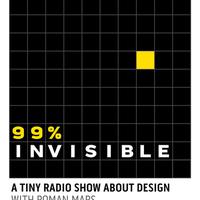99% Invisible-07- 99% Alien
Roman Mars (RM): This is 99% Invisible. I'm Roman Mars. RM: Spacecraft design is a study in humanity. At least that's what Mary Roach says. MR: My name is May Roach. I'm the author of Packing For Mars: The Curious Science of Life in the Void. RM: In the beginning, the designers of the space habitation modules
MR: The box where the crew lives.
RM: Yep. That's the one. They stuck with what they knew.
MR: Very few people had spent any time up there in zero gravity. People just intuitively designed it like a room on earth. There would be control panels and then there were little chairs, there were seats that you would sit on. It makes no sense inzero gravity, you can't sit. You would have to strap yourself to the seat!
RM: The reason is simple.
MR: We are humans. When we have a room, we have a floor and a ceiling, we have chairs and tables and that's what we do. And that's how its designed. RM: But getting stuff into space is expensive. So there's always a grand effor to minimize wait and to create the most efficent space possible. And all those human comforts came under scrutiny.
MR: So then they went to the other extreme- get rid of it all, because in space, the walls become your table. If you have a table and you put something down on the table, the table doesn't act like a table. It doesnt hold it there. It just floats off. A drawer isnt very good- you open the drawer and everything flies out. So what you have is pieces of elastic on the wall, like, you know, you pull the elastic back and you stick your clipboard in there. And everything has bits of velcro so the walls become the tables. You have a very bare box that you're living in. RM: So that became the game plan. No furniture, no ceiling, no floor- a perfect utlitiarian box, where the astronaut floats freely and uses every single surface to the fullest.
MR: The great thing about zero gravity – we could use the ceiling, we can put the bathroom on the wall.
RM: But this is where the human factor comes in. The capsule became overdesigned for the zero G condition. And it became too alien. The humanity was lost.
MR: the one thing that the crews decided that they were not ok with was getting rid of a kitchen table. Like a dining table- a place to gather around at the end of the day. You know, sit down or pretend to sit down, and talk about what you did over the day, eat- I mean we're humans! Human beings want to sit around the table and gossip and talk about stuff and eat and drink. And the table came back. It's a small table and there's little pieces of elastic and velcro and they all hover around the table. RM: So despite that horrifying scene in alien, a table on a spacecraft makes for a happy astronaut.
RM: So in the living quarters there's now an effort to use earth orientation. MR: The bottom part is the floor. Ceiling above, walls are walls. The way that they cue them in is that the lighting will be up above. So there's always ways so that you know what the accepted orientation is. RM: Keeping one orientation helps in the constant war against motion sickness. And having everyone in the same orientation also helps the crew talk with one another.
MR: I interviewed this astroaught, Lee Morin, about how troubling it is to try and have a conversation with someone who is upside down when you are rightside up. We're sort of lip reading all the time without realizing it. He said, “when you go beyond a 45 degree angle, the other person starts to have trouble reading your lips. So it's considered impolite to carry on a conversation when you are upside down. Or when you are differently oriented.
RM: I love these examples in the fundamentals of other worldly space design, because if you were to recreate that excersize right here in a gravity-based habitat and start from scratch, what would you re-design completely? Would everything simple evolve back to the way it is now? Would US currency still be inexplicably uniform in color and size? Could we get rid of cars if we started over? Could we finally make the steam punkers happy and have a sky full of derigibles? My guess is that even the poorly-designed and inefficient objects would make a comeback. Because it might just be your dining room table, your crappy, wobbly, I-swear-honey-that-I'll-fix-it-soon-I-promise. It might be that dining room table that makes you a happy astronaut.
RM: 99% Invisible is produced by me, Roman Mars, with support from Lunar. It's a project of KALW, the American Institute of Architects in San Francisco, and the Center for Archtecture and Design. Find out more at 99percentinvisible.org

